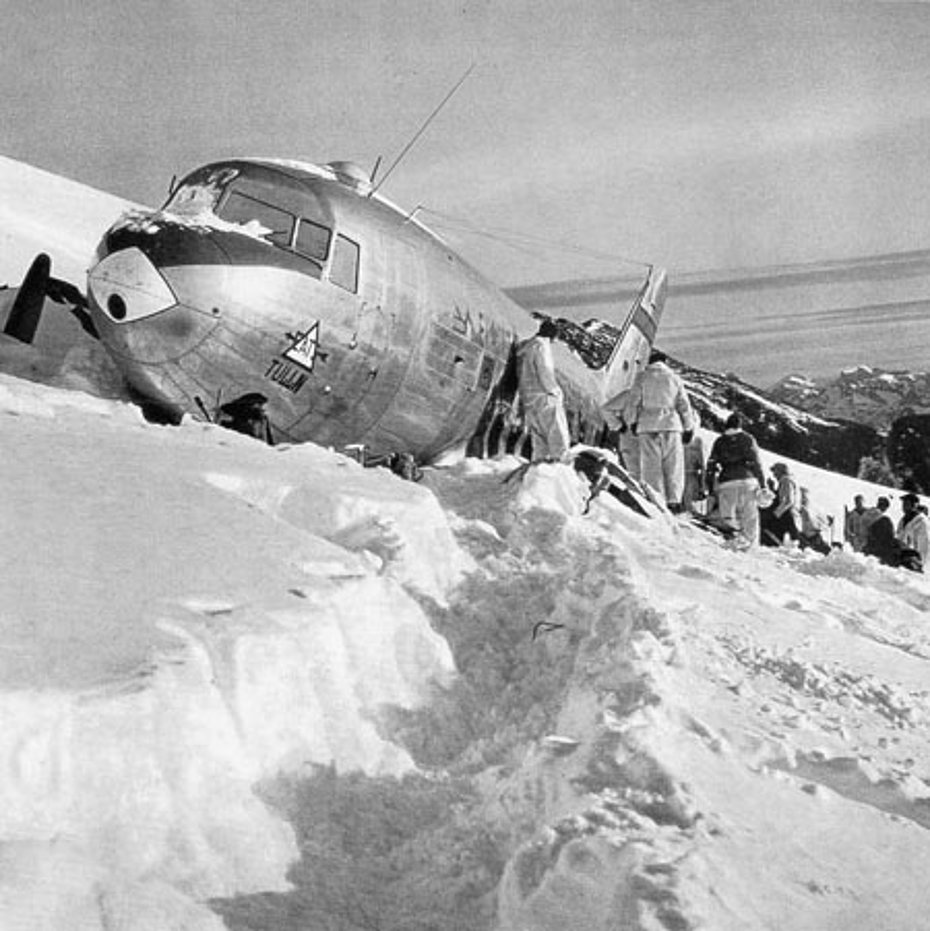
REGA
Rega celebrates its 60th anniversary
A historical review of its helicopters
Early rescue missions
With the historic rescue of the Douglas C-53's occupants accomplished in 1946 on the Gauli's glacier, a new era began in Switzerland: the era of the aerial rescue.
However on that occasion the stars of the famous rescue were not helicopters but two Fieseler Fi-156 Storch piloted by captain Viktor Hug and major Pista Hitz. The two military pilots landed next to the men of the relief-party and brought down the Dakota's passengers who had spent five cold nights on the glacier, at an altitude of 3'350 meters.
This event was followed with great interest worldwide. The Dakota's occupants were in fact senior personnel of the US Army with their family members.
In the following years Dr. med. Rudolf Bucher (1899-1971), who was the president of the Swiss Rescue Association (SRA), inspired by this event, invested his energies in the creation of a new organisation specialised in aerial rescues.
Then on the 9th annual meeting of the SRA, which took place on the 27th of April 1952 in Twann/BE, Bucher presented his vision. That same day the SRA’s delegates approved the creation of the Swiss Air Rescue Guard (SARG).
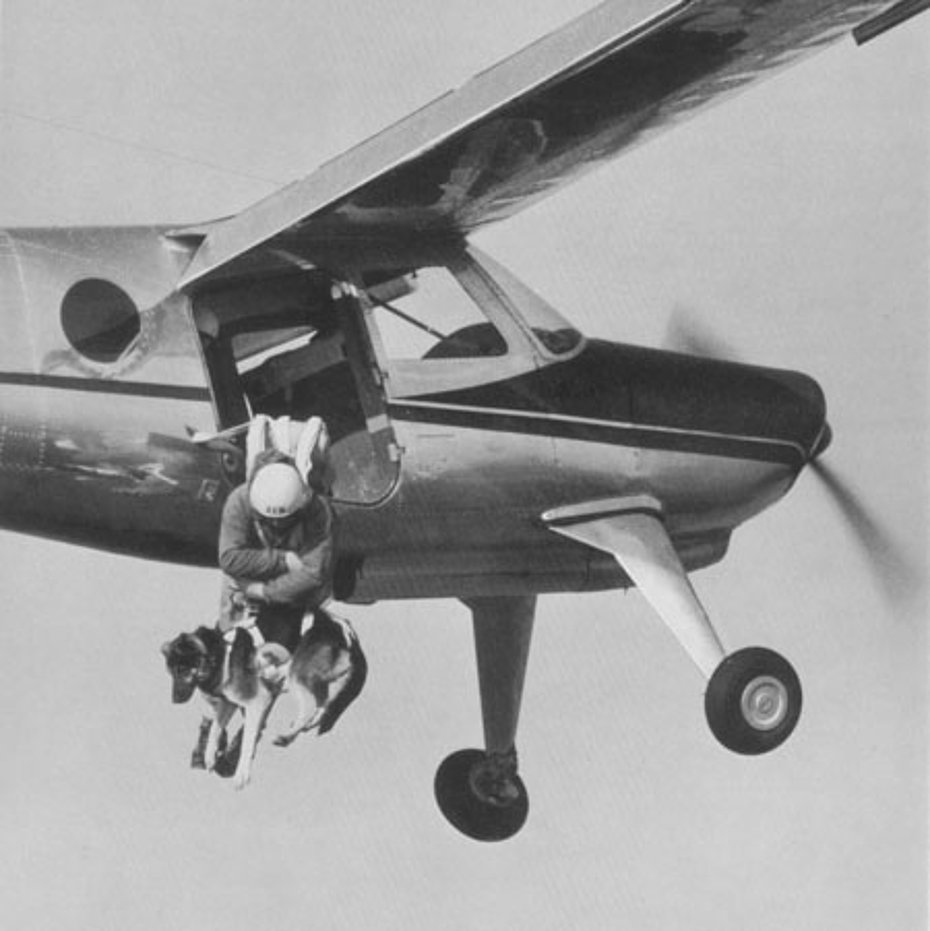
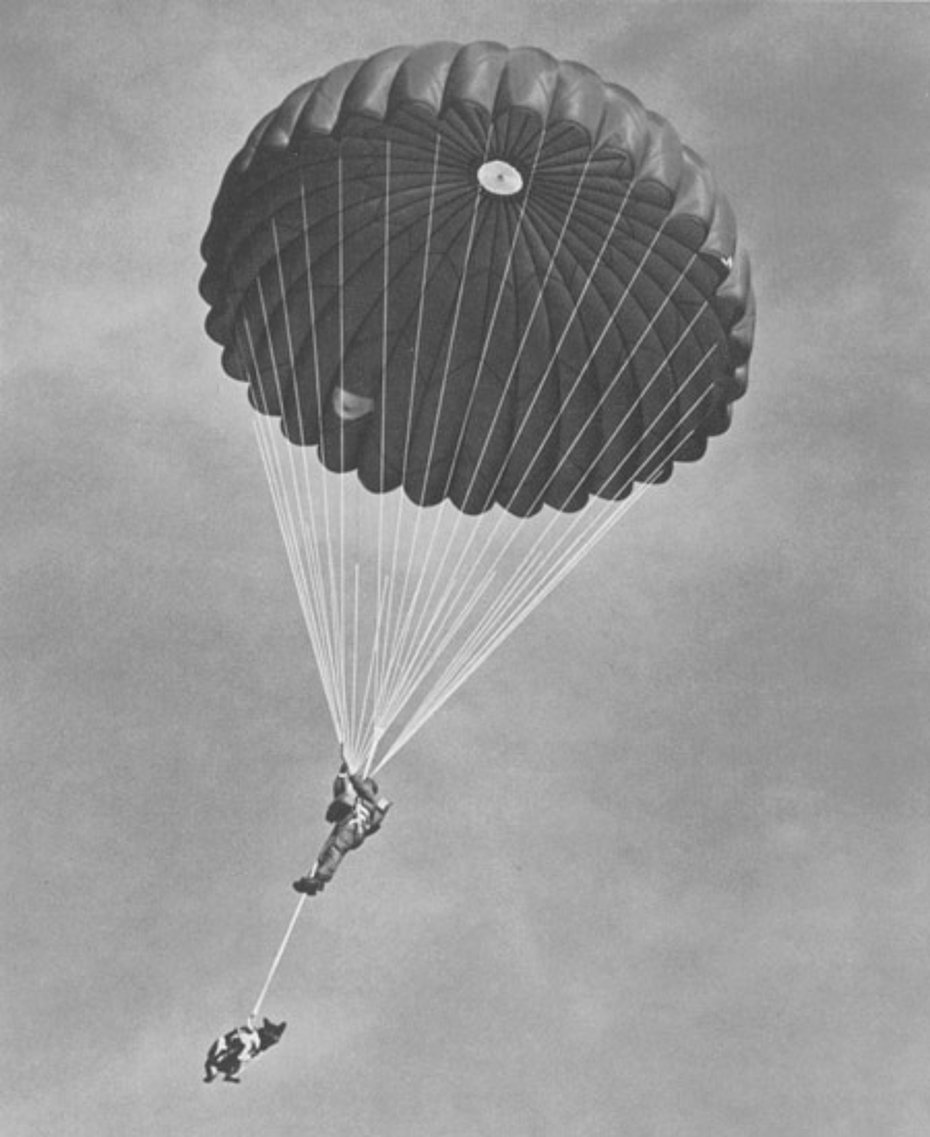
The rescue parachutists
At the time of the SARG's foundation there were only two Hiller 360 helicopters in Switzerland which belonged to Air Import.
These small three-place helicopters however had limited performance and at their maximum take-off weight they were unable to land and take-off at altitudes exceeding 1'200-1'500 meters.
Due to the lack of alternative options, specially trained rescue parachutists were put into operation.
In case of emergency these men were transported by airplane directly to where their help was needed. Their primary task was to provide urgent medical attention until the arrival of the men of the relief-party.
When necessary, as for example in case of avalanche, they jumped along with their avalanche dogs.
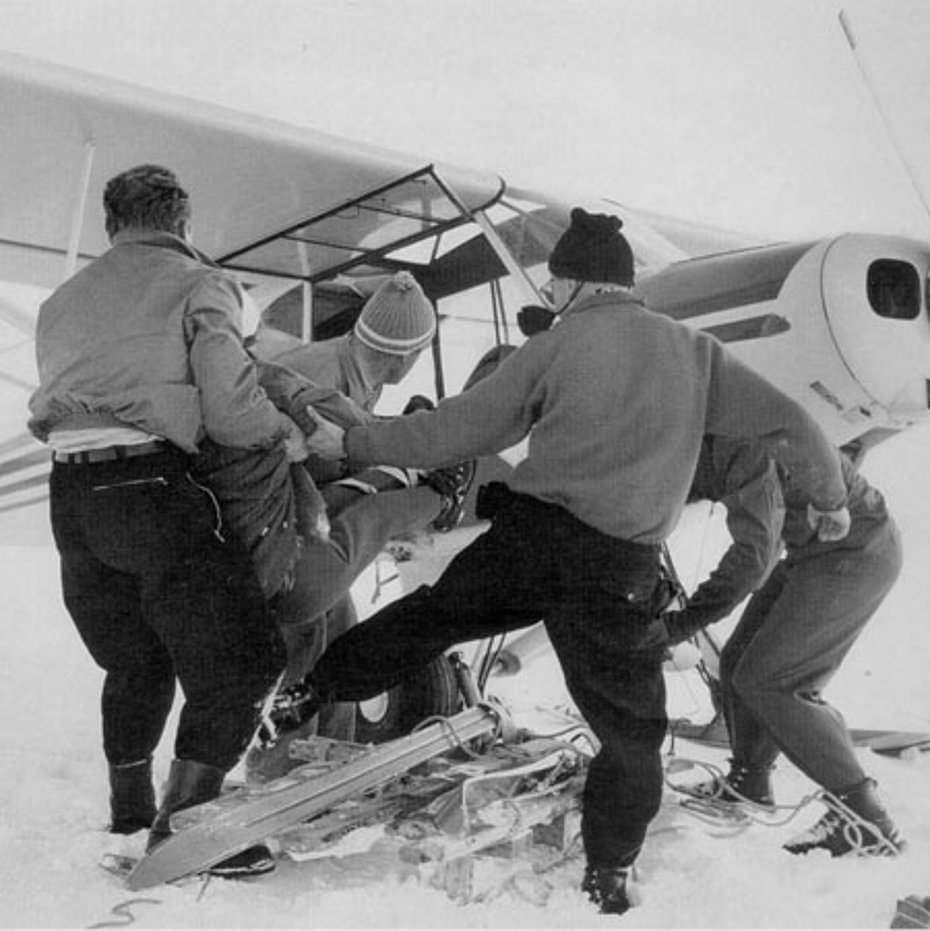
When possible the wounded were transported by small airplane (such as for example the Piper Super Cub) fitted with snow skis.
Among the first SARG's rescue pilot were Grison hotelier Fredy Wissel and famous Valaisan pilot Hermann Geiger. Both were the pioneers who developed the mountain landing technique.
At the beginning the rescue missions were very few compared to today. In 1953 SARG performed six rescue missions compared to 2011 with 14'420 rescues!
The deployement of rescue parachutists was altogether quite limited, mainly also because this method of rescue presented considerable risks for the rescuer himself.
The rescue helicopter
In Switzerland the first demonstration of the helicopter's potential occured in 1948 by Alan Bristow. The British pilot used the Sikorsky S-51 G-AJHW fitted with a winch.
The trials took place at Kloten and Meringen airports. However like the Hiller 360, the S-51 performance was equally quite limited. Therefore it was unthinkable to use it for mountain rescues. Moreover the cost of the helicopter was out of SARG's reach.
Despite limited performance the future of helicopter aerial rescue seemed promising.
Confident that manufacturers would eventually develop more suitable and powerful models, SARG started a long series of tests. Step after step the pioneers laid the foundation of today's rescue techniques.
Initially since SARG had not own helicopters she was forced to ask for Air Import's assistance.
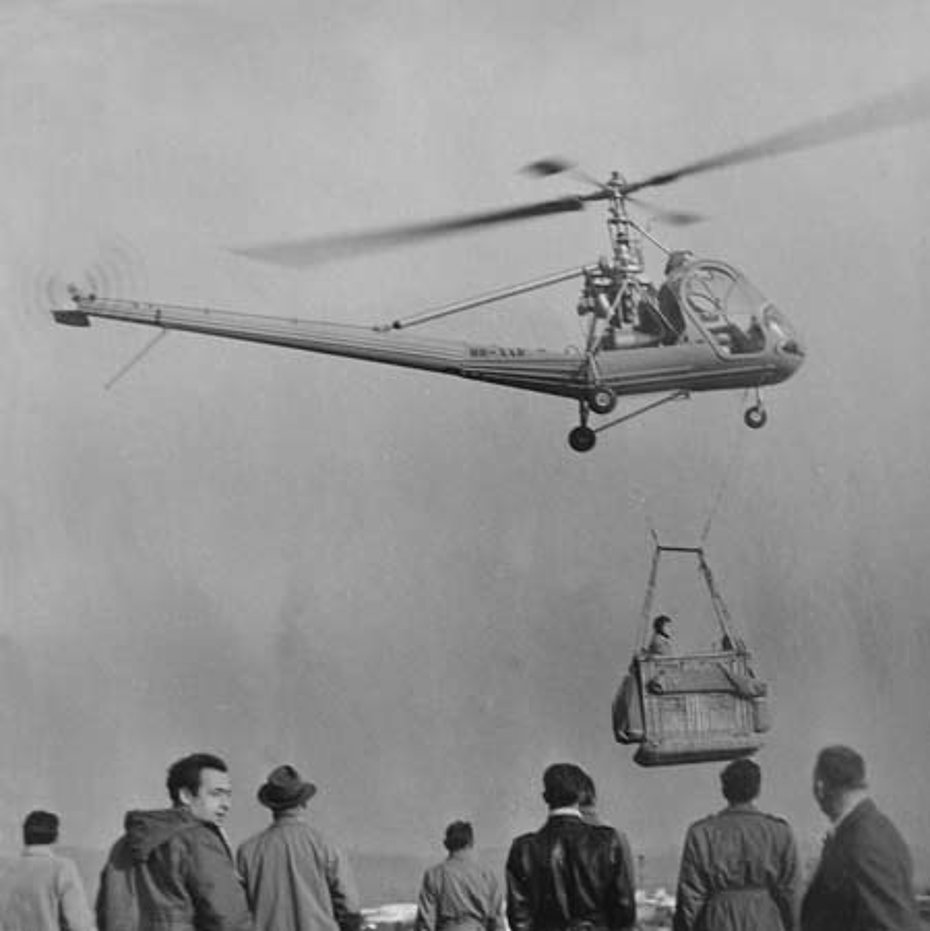
First experiments
In November 1952 at the airport of Zurich-Kloten SARG made the first test using a Hiller 360 piloted by Sepp Bauer. At first an avalanche rescue was simulated with the rescuer and his dog transported in a basket suspended under the helicopter. Then during a second test a water-rescue was simulated. The idea of the basket was immediately abandoned because due to obvious problems.
On the 19th of December another rescue exercise with the simulation of an avalanche was organized in Davos/GR. On that occasion Sepp Bauer used a military Hiller UH-12B (reg. KAB-202) to transport the rescuer with his dog directly to the site. The helicopter was then again used to transport the "injured" directly to the hospital.
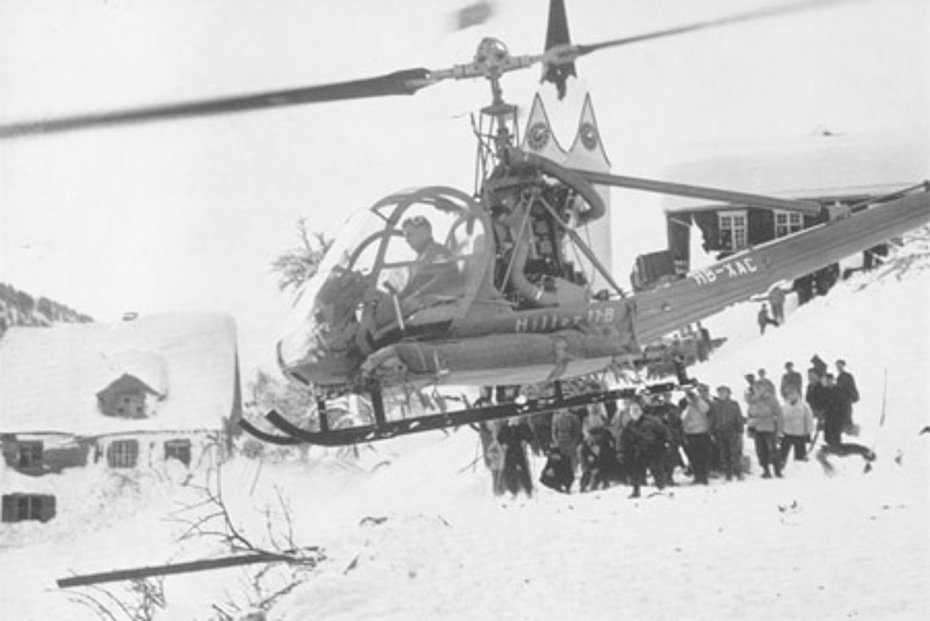
In 1953 the SARG witnessed two interesting tests. The first saw the partecipation of the Sikorsky S-55 F-BGOY piloted by Gérard Henri, while the second involved the Bristol Sycamore Mk. 4 G-AMWI piloted by Peter Wilson. Both helicopters were equipped with a winch and were used for SAR tests. However they were not particularly suited to operate at high altitude because their limited performance.
First uses of the helicopter
The SARG used for the first time a helicopter in Holland in February 1953. The young Swiss organization was alerted following the floods. A Hiller 360 of Air Import was immediately sent to the site to help the flooded population.
In January 1954 many avalanches hit the Voralberg region in Austria causing several victims.
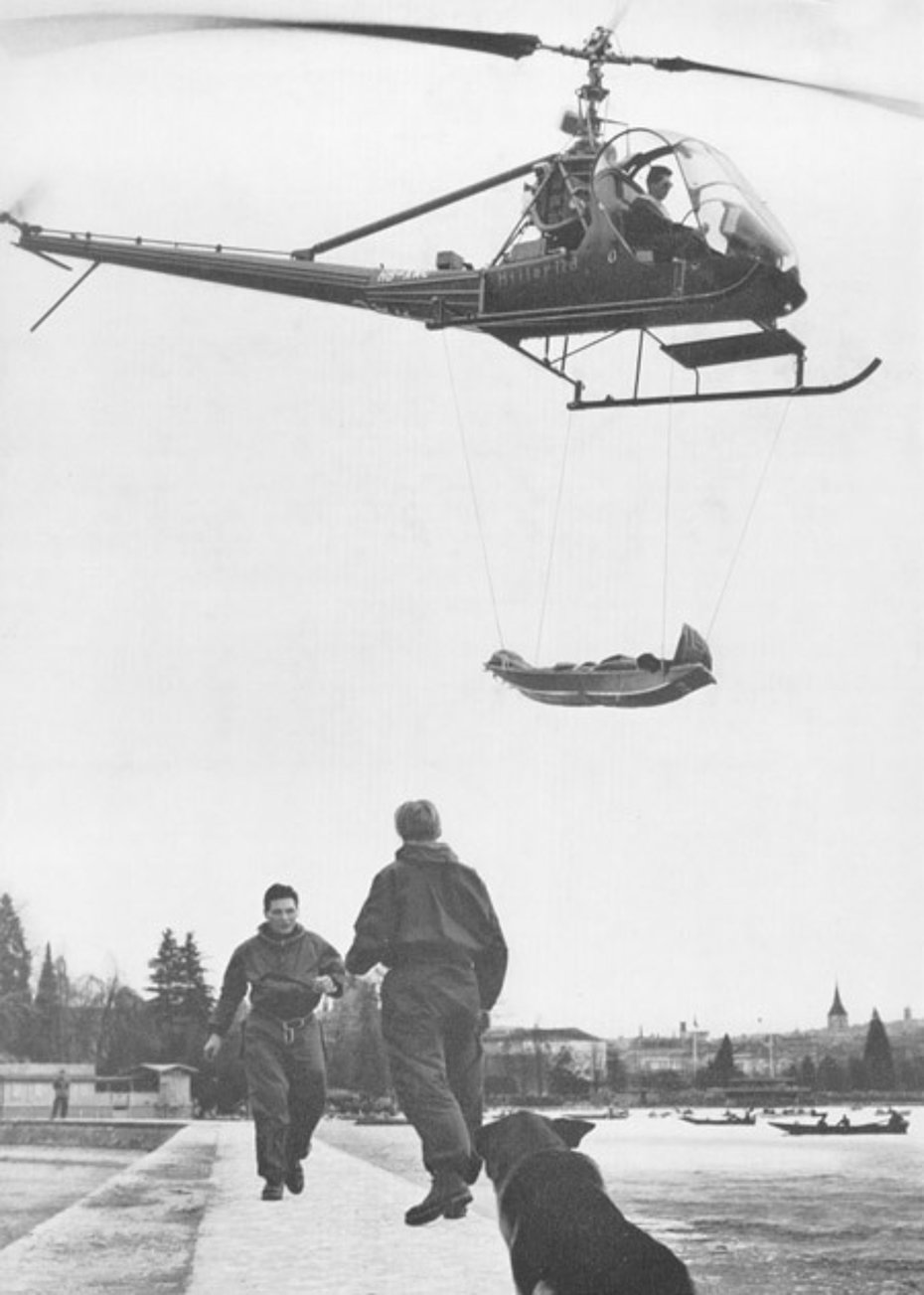
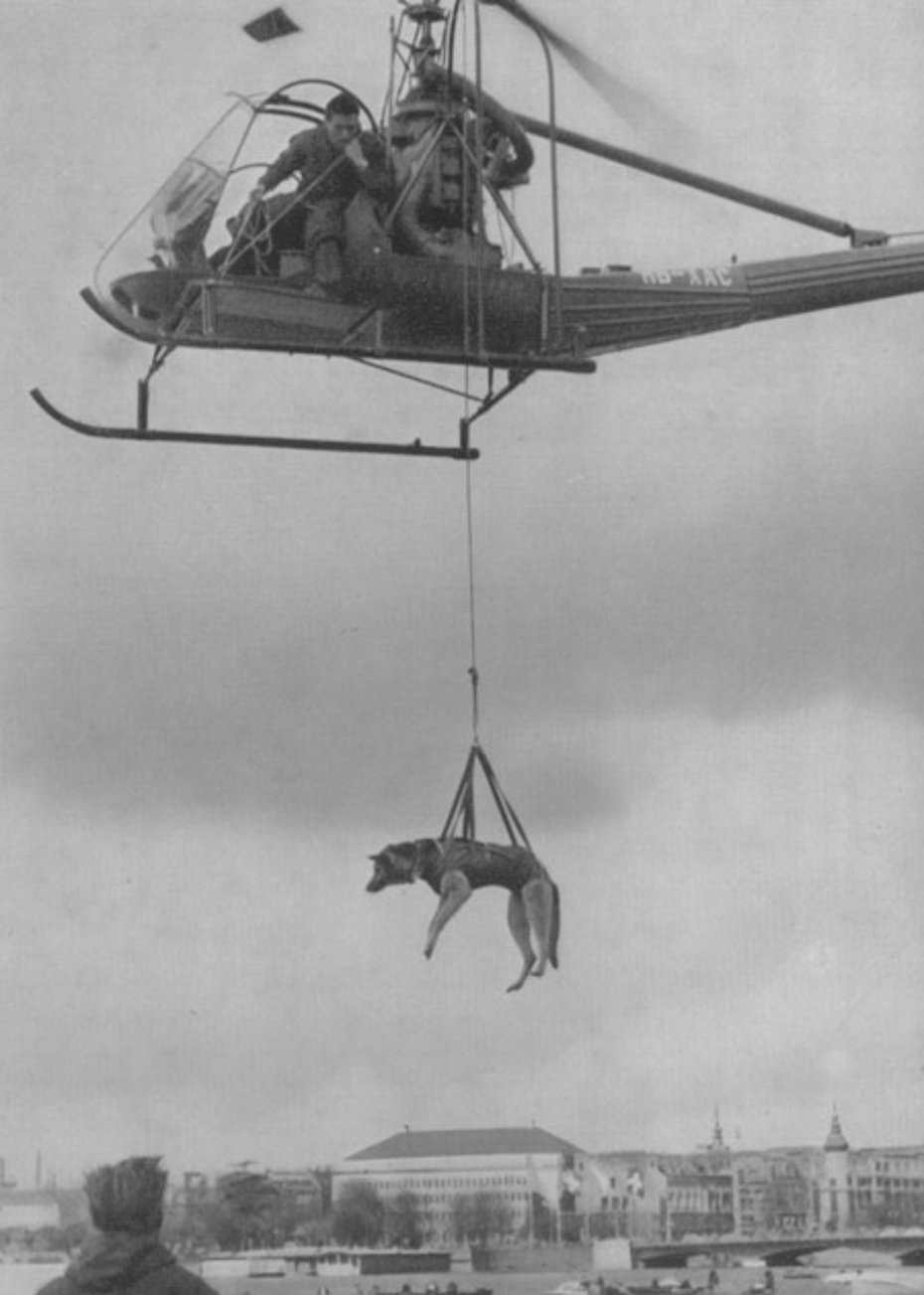
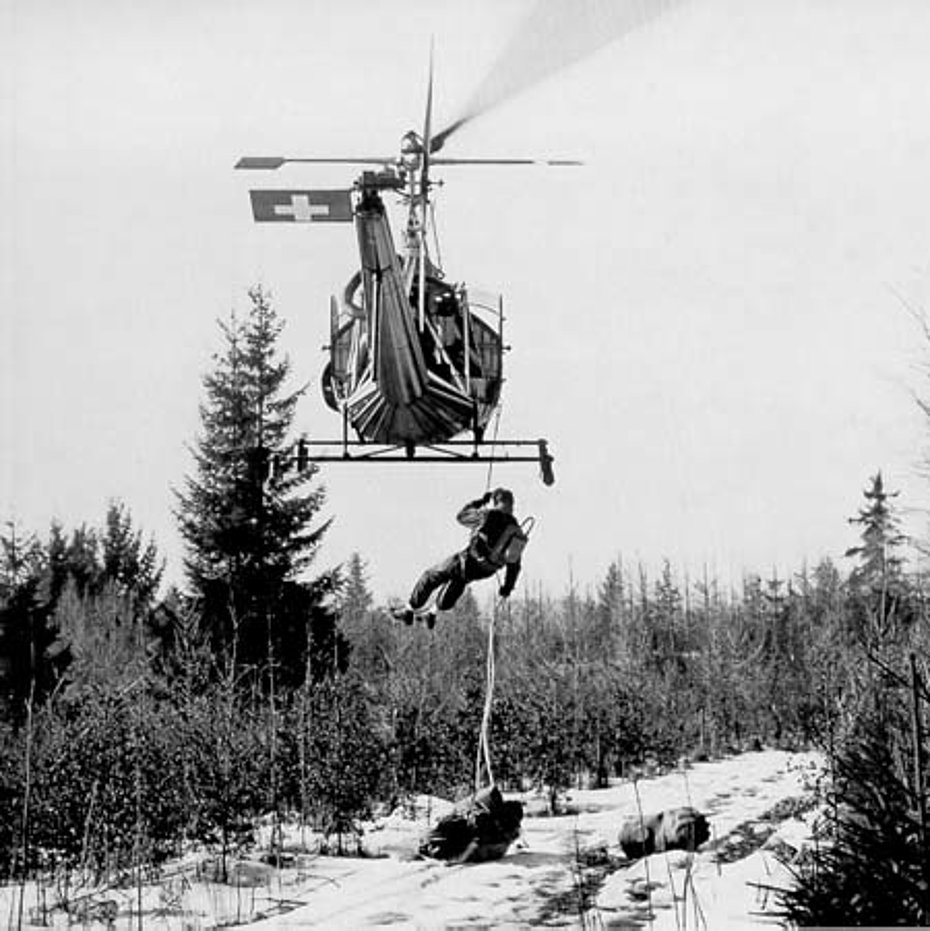
The event of Zurich
Between the 25th and the 27th of March 1955 SARG organised a large event in Zuerich to demonstrate recent progress. On that occasion some new features were displayed. One of them was the winch "Liberator". This equipment was mounted on the Hiller UH-12B and was tested to lower people and medical equipment. Other novelties were the sledge Akja which could be suspended under the helicopter and a small ladder. All this equipment however never found a practical use, or was used only occasionally.
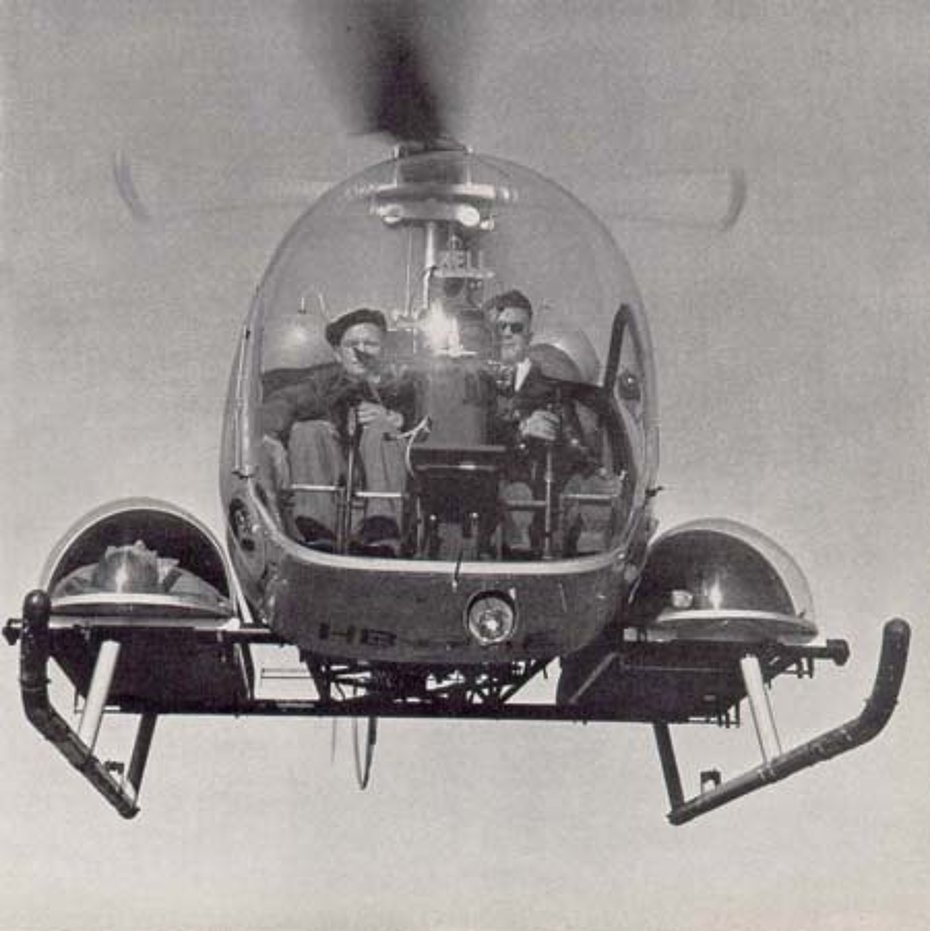
The Bell 47G of the Heliswiss
Starting from Winter 1954/1955 the Hillers were reinforced by the first Bell 47G purchased by Heliswiss. This helicopter could also be equipped with two external stretchers for the transportation of two injured victims.
Among the first missions performed by this model there was the evacuation of an injured walker on 19th August 1955 in the region of the Dussistock/Tödi at an elevation of 2'650 m by pilot Leo Kunz. Considering the limited performance of the Bell 47G this was almost an event.
The arrival of the more powerful Agusta-Bell 47G2 helicopter enabled rescues at higher altitudes (3'000-3'500 meters).
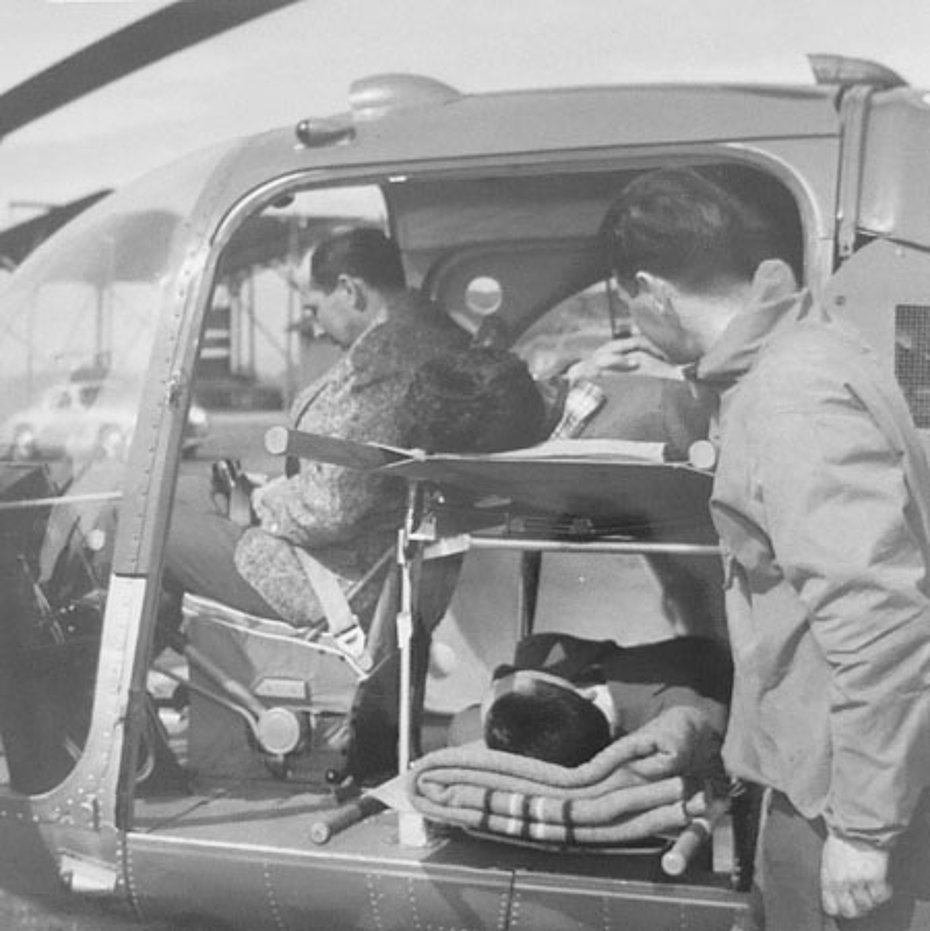
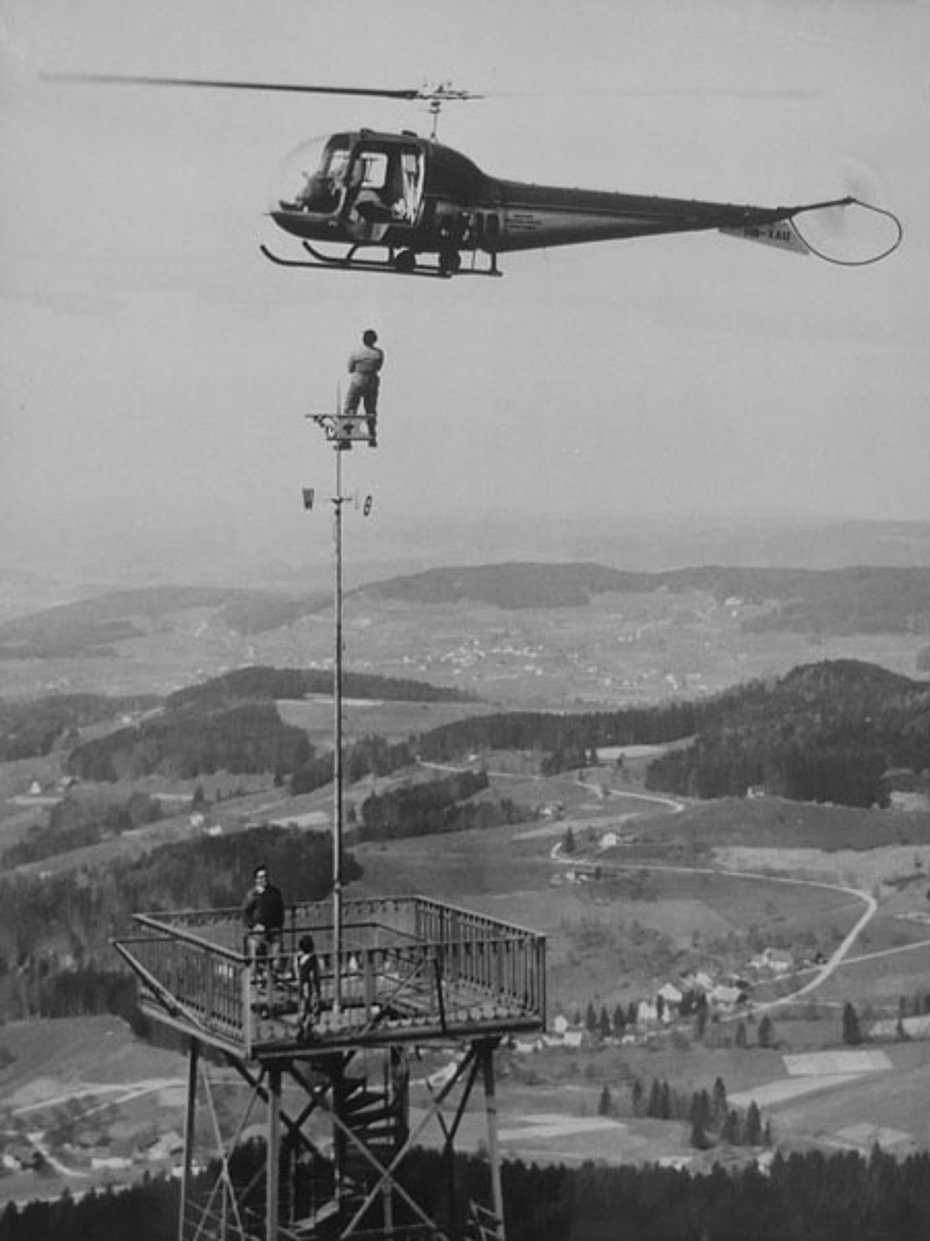
Pilot & rescuer
As mentioned at the beginning SARG didn't had its own helicopters. When necessary the few helicopter pilots available in Switzerland, who were also trained as rescuers, were called in for duty by SARG. Frequently the pilots were the first (if not the only ones!) to arrive at an accident site. It was their task to provide urgent medical attention to the injured. Unlike today there were no doctor or professional first aid staff on board rescue helicopters.
The arrival of the Bell 47J Ranger HB-XAU
In 1956 the Association of Swiss Consumers' Cooperative Societies (now simply known as the Coop) organized a fund raiser in its chain of shops. The purpose was to donate a helicopter to the famous pilot Hermann Geiger for his rescues.
Altogether about 500'000 Sfr. were raised and with this money it was possible to purchase a Bell 47J Ranger, one of the first (if not the first) sold in Europe.
This helicopter registered HB-XAU was not particularly suited for alpine rescues, but unlike its predecessors, it could transport two stretcher victims plus one medical attendant inside its large cabin.
The helicopter was officially presented during a ceremony organized in Muttenz near Basle. Bell's famous test pilot Joe Mashmann performed some demonstration flights for the audience.
The HB-XAU was equipped with a winch, but it was impossible to use this equipment during mountain rescue. As well as its predecessors in fact the helicopter was unable to hover outside ground effect at high altitudes. For this reason the helicopter, usually based in Sion, was used primarely to transport the rescuers to the accident site and then to evacuate the injured directly to the hospital.
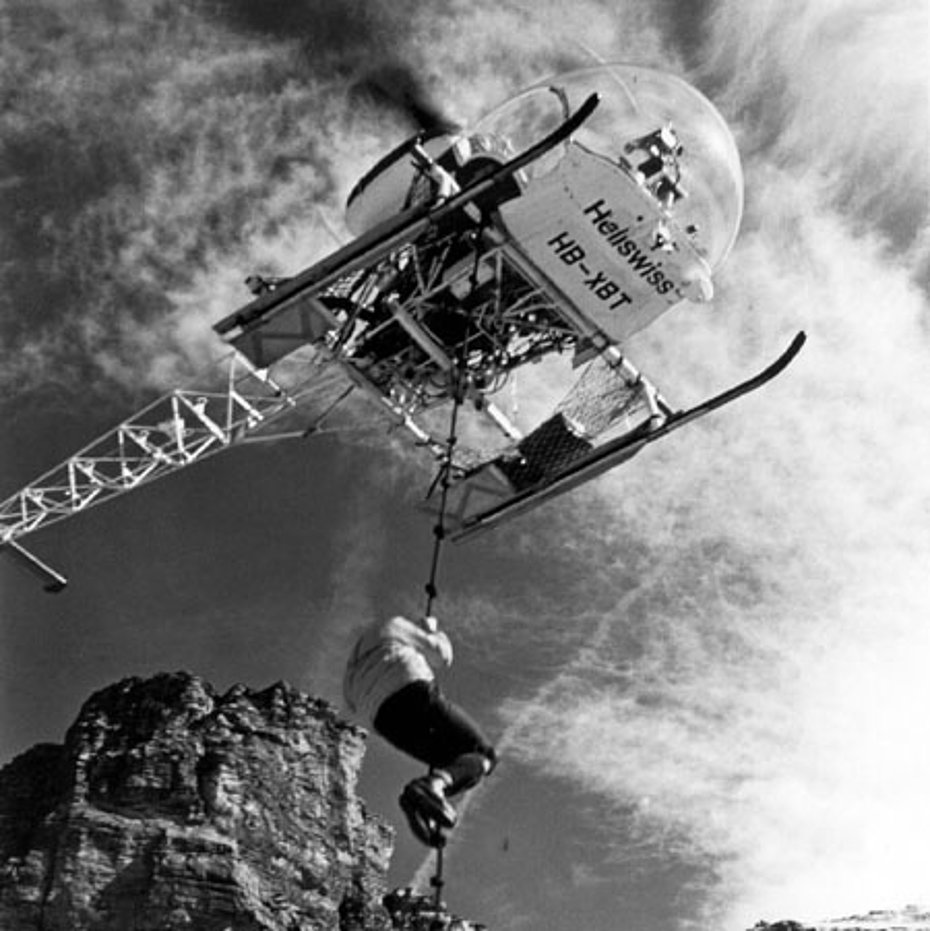
Compared to light airplanes (intensively used by SARG until the arrival of the first turbine powered helicopters) HB-XAU had the advantage that most of the time it could land next to the injured and transport the victim faster and more comfortably to the hospital.
Rescue timing was frequently a matter of life or death. Speed also signified money savings, another important aspect who afflicted SARG in those years. Note that most rescue work was initially undertaken by volunteers.
The separation from the SLS
On the 19th of March 1960 SARG became an indipendent organization, separed from the SLS.
In those years it had a difficult time characterized by internal conflicts. Hermann Geiger for example resigned, a hard loss for the rescue organisation. Another significant problem was the lack of funds. To finance its activities Dr. med. Bucher introduced the membership card.
In April 1965 SARG put into service Agusta-Bell 47J3B-1 HB-XCA, a model apparently similar to the HB-XAU but equipped with a more powerful engine. With this model it was possible to make rescues at highier altitudes.
In September 1966 SARG held the first Swiss Air-Rescue international helicopter symposium on the Kleine Scheidegg. Several inovations such the rescue knots line and the horizontal net, used for rescuing victims from inaccessible places where it was impossible for a helicopter to land, were presented to the audience.
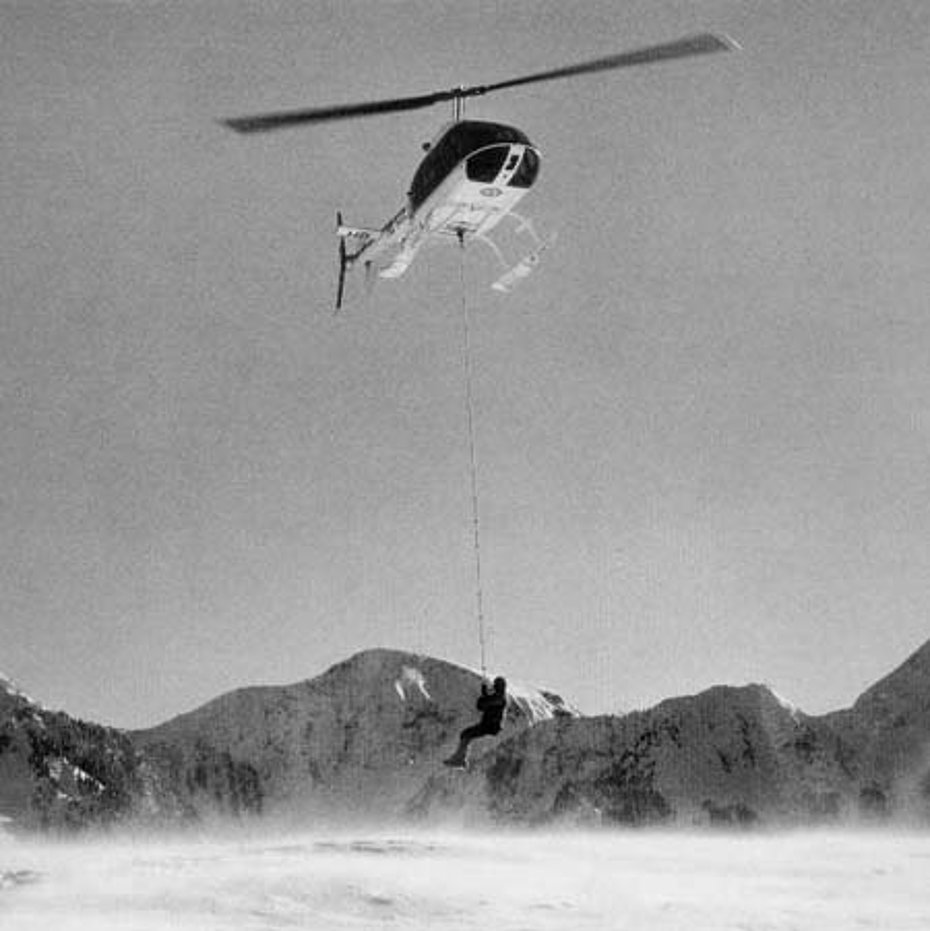
The arrival of the Jet Ranger
In January 1969 SARG put in service Agusta-Bell 206A Jet Ranger HB-XCU, it's first turboshaft powered helicopter. The Jet Ranger could transport two injured on stretchers plus a medical attendant. Compared to the Bell 47 it was faster and offered superior performance, even though space inside the cabin was quite limited.
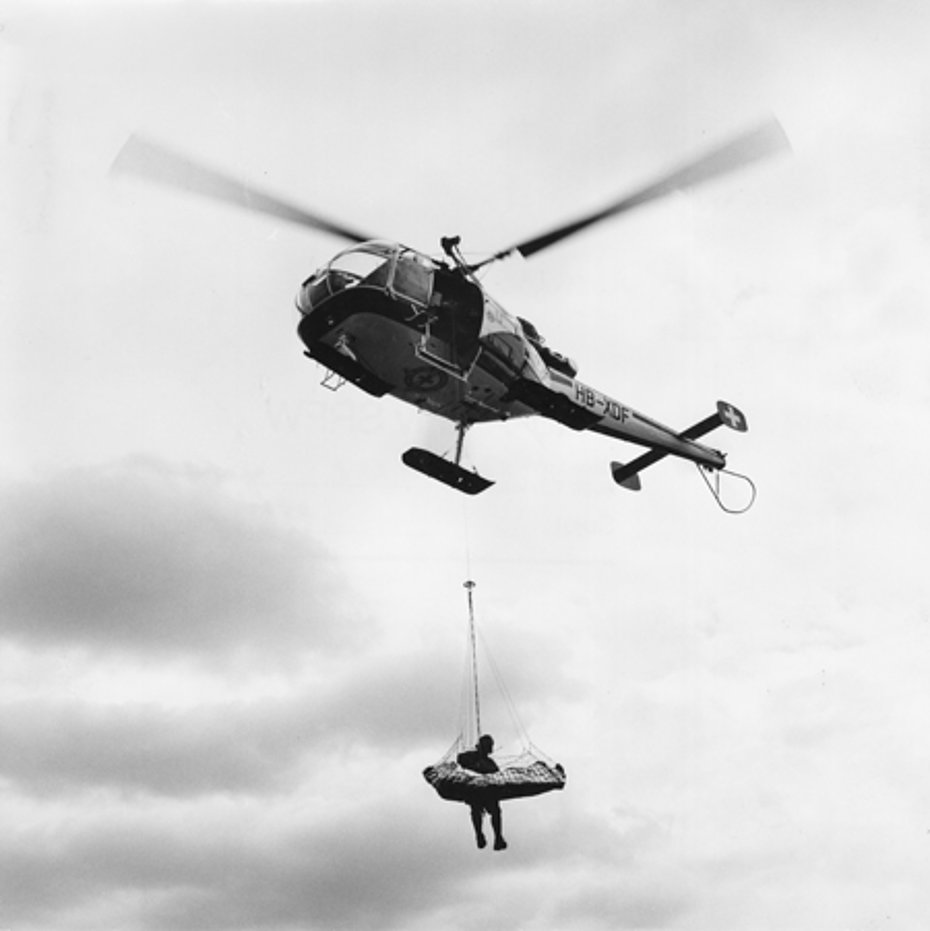
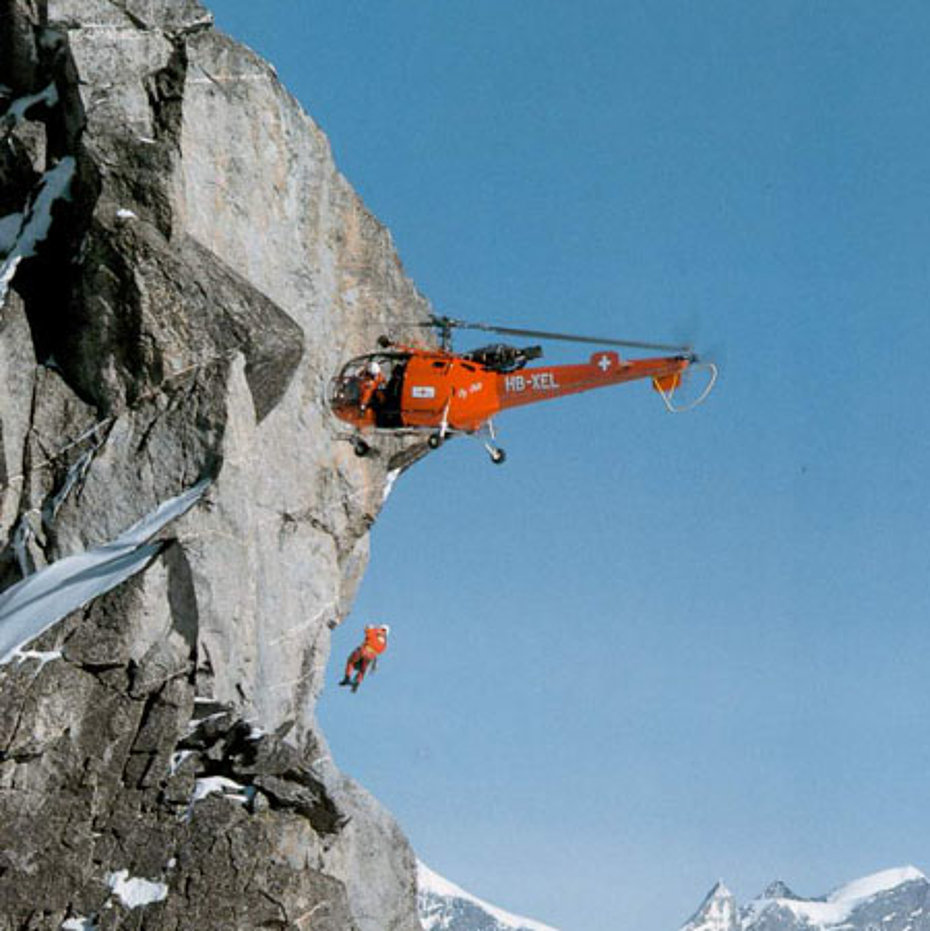
Meanwhile the number of rescues had increased rapidly to some 600 during 1970.
That same year Air Zermatt's pilots (a SARG's partner) Günther Amann and Siegfried Stangier displayed the Alouette III's performance (and obviously also their skill) during the second Swiss Air-Rescue international helicopter symposium on the Kleine Scheidegg, setting down from the hovering helicopter at five different sites on the north face of the Eiger guides and paramedics suspended at the end of a hoist cable.
On that occasion the helicopter demonstrated that it had finally reached full maturity and was ready to write new chapters in the air rescue book.
The Alouette III with its large cabin and a powerful turboshaft could be used at high altitudes. It had superior power reserve, and even nowadays it is still in service for SAR operations.
This French helicopter opened the doors to aerial rescues considered until that moment as impossibile and marked a big step ahead.
SARG is deeply fond of the Alouette III. The first, registered HB-XDF, was officially put in service on the 4th of June 1971 with a short ceremony. Nowaday this helicopter is displayed at the Swiss transportation museum in Lucerne.
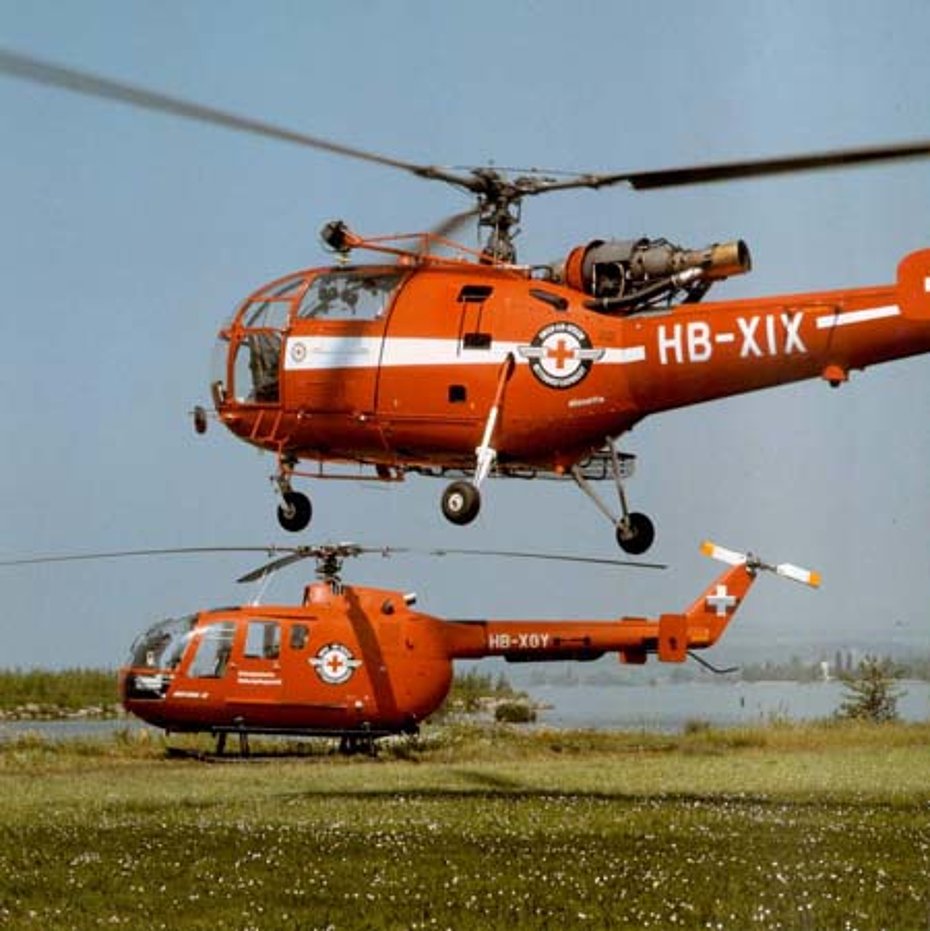
Several months later pilot Günther Amann rescued two mountaineers from the Eiger's north face. It was on that occasion that a helicopter made a first direct mountain rescue.
In those years great improvements were made in all the fields (urgent medecine, intervention techniques, equipment).
Unfortunately 1971 was also marked by a sad event, or the death of Dr. med. Rudolf Bucher, SARG's founder.
The arrival of the first twin-engine helicopter
In 1973 SARG purchased MBB BO-105C HB-XEI, its first twin-engine helicopter. Later this helicopter and another one (HB-XEK) were replaced with the more modern version MBB BO-105 CBS-4 (HB-XGM, HB-XGT, HB-XGY and HB-XXK).
SARG changes its name
Until 1979 Swiss Air-Rescue's official name in German was "Schweizerische Rettungsflugwacht", or SRFW for short, in French "Garde Aérienne Suisse de Sauvetage" (GASS) and in Italian "Guardia Aerea Svizzera di Soccorso" (also GASS). However, these names were rather long-winded and had different acronyms. This unsatisfactory situation was solved by adopting the term which until then had served as its radio code name, composed of elements from all three language versions: REGA, made up of "RE" from "REttungsflugwacht" and "GA" from "Garde Aérienne" and "Guardia Aerea".
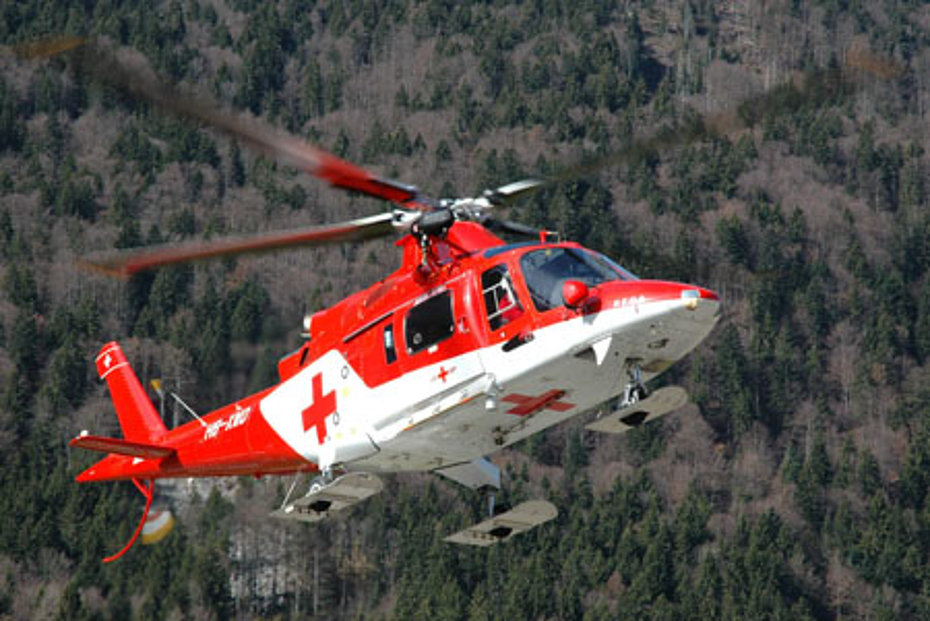
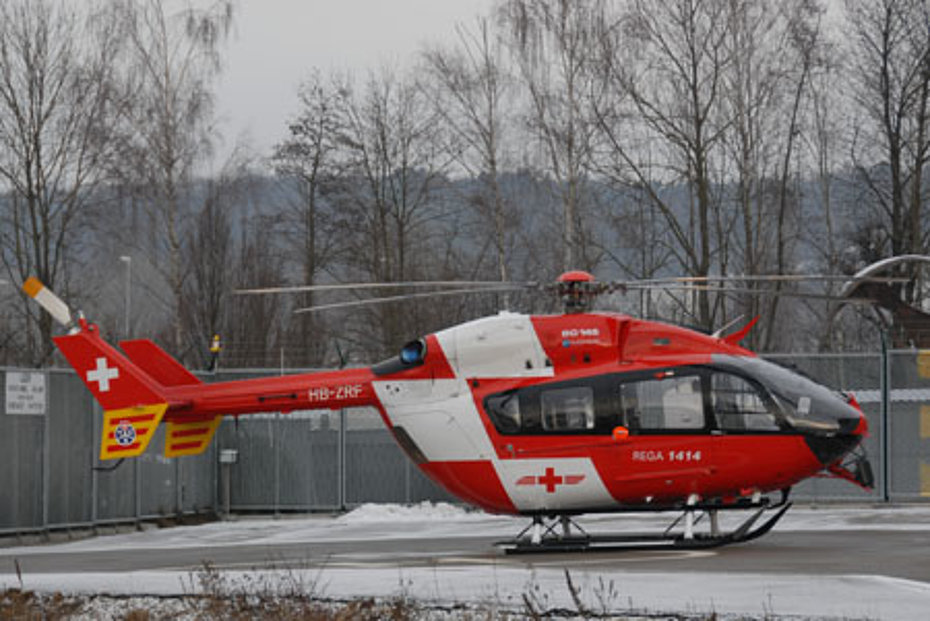
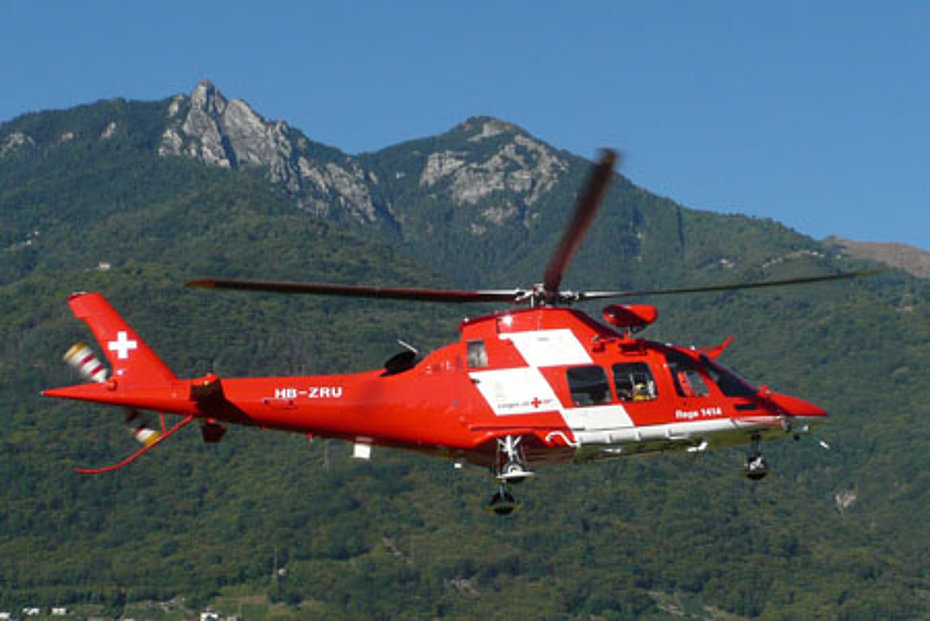
By the end of the '80s REGA decided to replace its fleet with a newer helicopter. After a long evaluation process the choice was made for the Italian Agusta A109K2.
The first of these was HB-XWB which entered service on the 14th of August 1992 in Untervaz/GR.
The A109K2 was intensively used for about twelve years before being replaced by the latest Agusta-Westland 109 SP "Da Vinci" and the EC-145.
The first is an evolution of the A109K2, it has a larger cabin, more powerful turboshafts, improved performance and modern avionics. The first was delivered to REGA on the 11 th of June 2009.
The EC-145 is a twin-turboshaft manufactured by Eurocopter, the successor of the BO-105 series. The first entered service on the 12th of March 2003 at their Basel base.
Presently REGA operates a rescue helicopter fleet of 11 AW-109 Da Vinci and 6 EC-145.
The images much more than the words
The images published along with this article clearly describe the improvements made by REGA during its 60 years of existance, and speak for themselves.
A special acknowledgment for this 60th anniversary of REGA goes to Dr. med. Bucher and the other co-founders.
These pioneers laid the foundations to the creation of the aerial rescue in Switzerland.
As a rotary-wing fan another special thought goes to the early helicopter pilots who served in the SARG's rank: Sepp Bauer, Hansueli Weber, Leonard Kunz, Oswald Matti, Emil Müller, Walter Demuth, Max Kramer, Alfred Glauser, Fernand Martignoni and obviously Hermann Geiger.
Last but not least REGA was elected by Swiss as the most loved national firm.
The photographs published along with this article come from REGA's books "Fliegen, helfen, retten" and "Un'idea...".
HAB 04/2012

